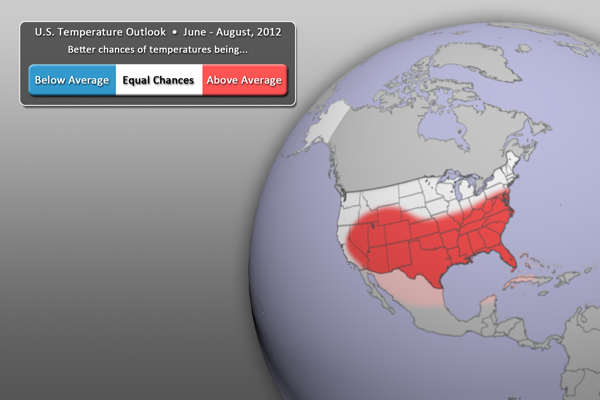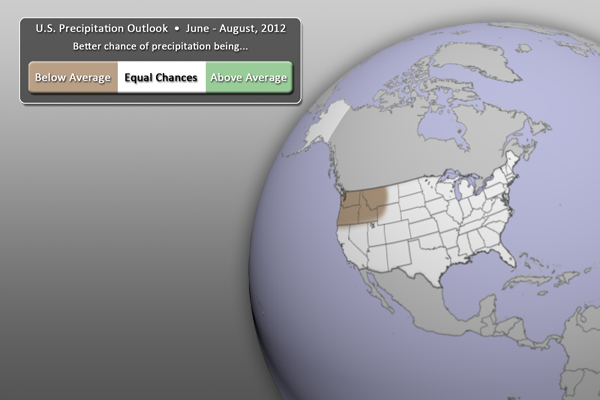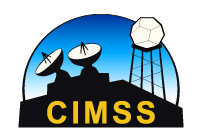Much of the United States is expected to be warmer than normal this summer. Only a small portion of the country is expected to be drier than normal. Read on for more information. Find these datasets in the “EarthNow” category on your SOS.
U.S. Temperature Outlook
- La Niña has officially ended.
- For the June – August period, warmer than normal temperatures are expected across much of the southern two thirds of the country.
- Cooler than normal temperatures are not expected anywhere.
- All other locations (in white) have equal chances of being warmer or cooler than normal.
- Outlook by NOAA’s Climate Prediction Center (CPC)
- In its forecasts, the CPC uses a wide variety of models in conjunction with looking at climate variables (like La Niña).
- It should be noted that areas in the “warmer than normal” region may still have cold winter days. This outlook only suggests that after the three months (June, July, & August) are over, those areas in the “warmer than normal” region are more likely to have experienced warmer than normal average temperatures.
U.S. Precipitation Outlook
- For the next three months (June – August), drier than normal conditions are expected for the Pacific Northwest, reaching as far east as Wyoming and Montana.
- Wetter than normal conditions are not expected anywhere.
- All other locations (in white) have equal chances of being wetter or drier than normal.
- Outlook by NOAA’s Climate Prediction Center (CPC)
- In its forecasts, the CPC uses a wide variety of models in conjunction with looking at climate variables (like La Niña).
- It should be noted that areas be in the “drier than normal” region may still have rain and snow storms. This outlook only suggests that after the three months (June, July, & August) are over, those areas in the “drier than normal” region are more likely to have experienced drier than normal averages.








